
For a long time Turkey Tails (Trametes versicolor) have been one of the few fungi that I felt confident identifying. However I have come to realize that there have probably been many fungi that I called Turkey Tails, that were not in fact Trametes versicolor. Part of the problem with positively identifying this species is that it is highly variable in coloration, so it is easy to assume that anything with concentric bands of contrasting color is a Turkey Tail. But this is not so.
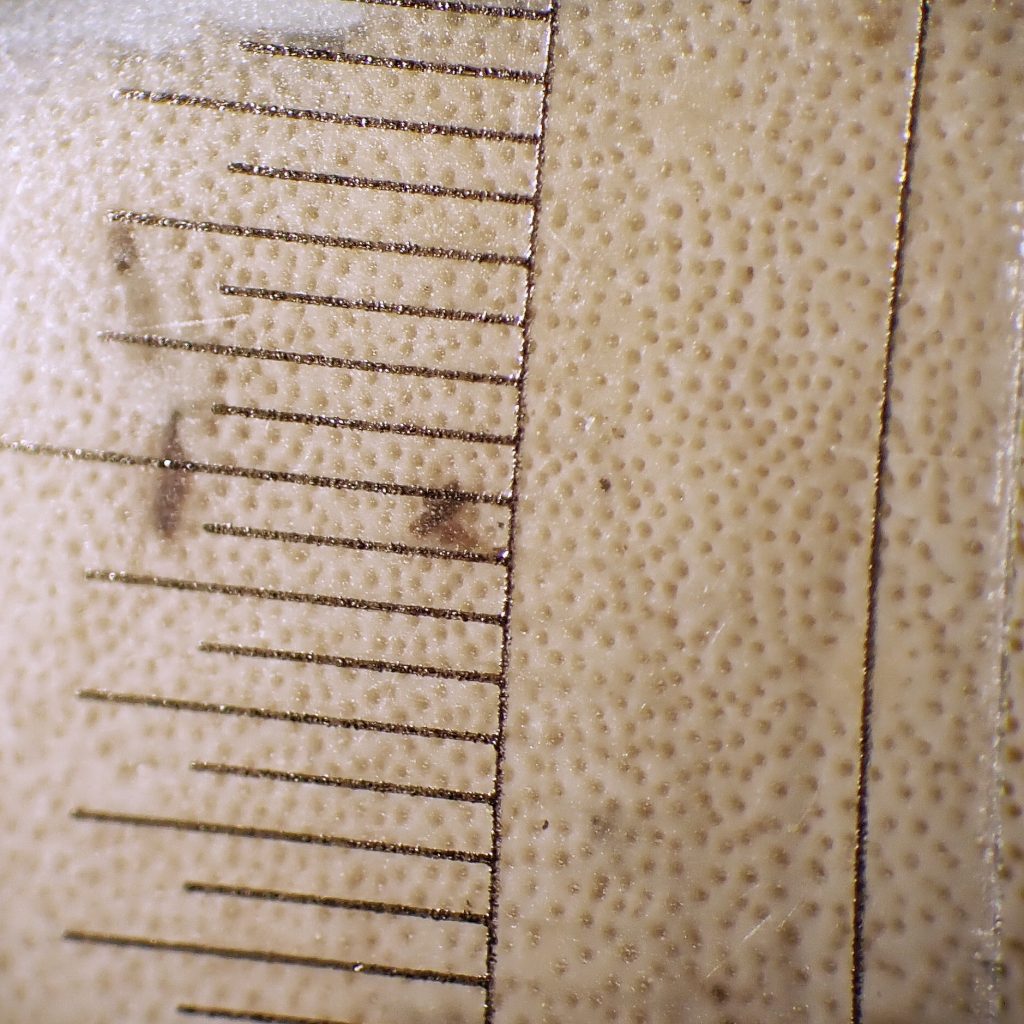
The combination of traits that confirms that the banded bracket fungus you are seeing is a Turkey Tail is that it will have a ventral surface that is white to cream with very small (3 or more per millimeter) but distinct, smooth pores; a hairy/velvety dorsal surface; and is thin and flexible on the outer half. From my reading and photo perusal it looks like Trametes hirsuta has only subtle differences, but it has thicker and more rigid flesh, and bands that are not as contrasting and are mostly shades of grey with a yellowish margin. I will now be on the lookout for similar species, and will report back with my findings.
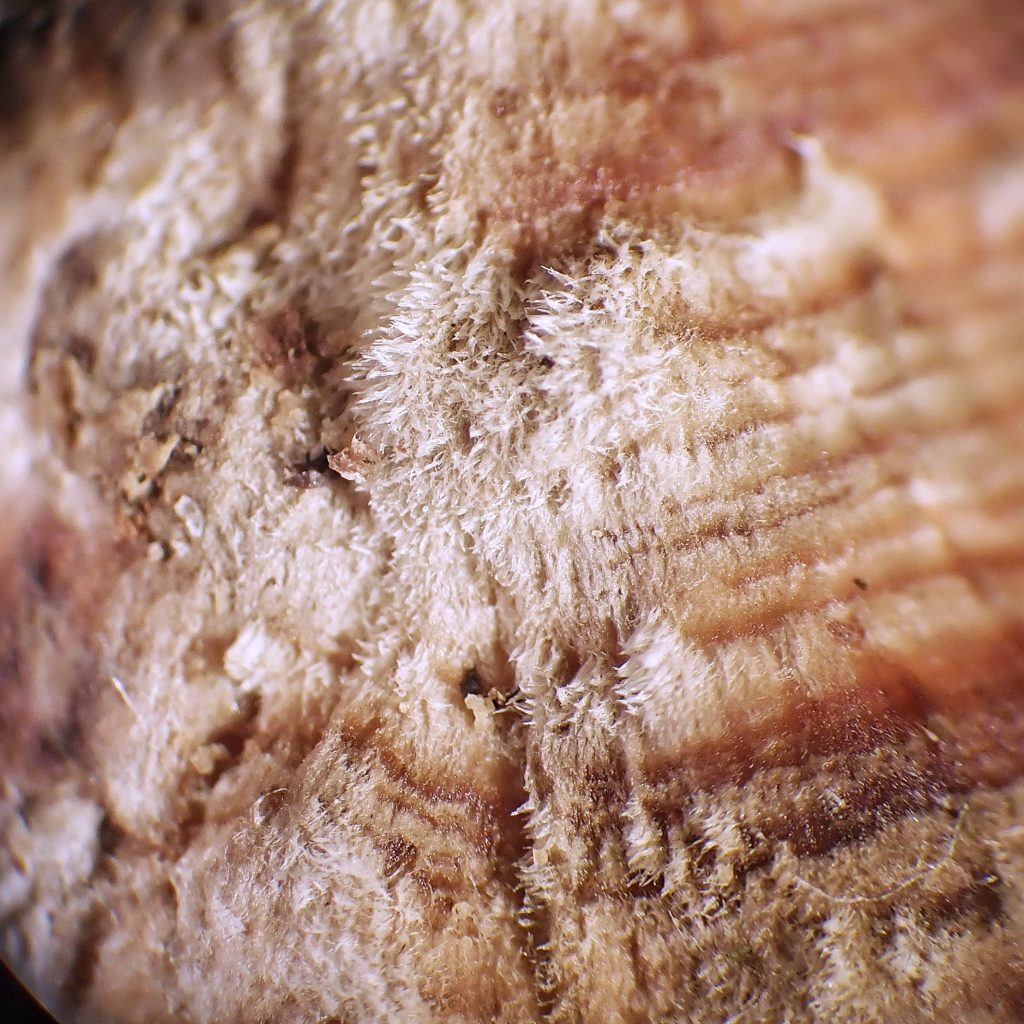
One of the things that most intrigues me about the ecosystems I’m exploring is finding out what eats what. In this case I got lucky in that there were two different species of Staphylinidae beetles on these specimens. But I didn’t get so lucky on identifying them, because Staphylinidae are notoriously difficult to identify. I think that the larger one may be in the subfamily Aleocharinae, possibly in the genus Atheta, but that is just guesswork based on photos and on the fact that Atheta sp. are known to prey on fungus gnat larvae. The other may be something in the subfamily Proteininae, possibly genus Proteinus, a guess which is also based on photos, and on their preference for dining on fungi.
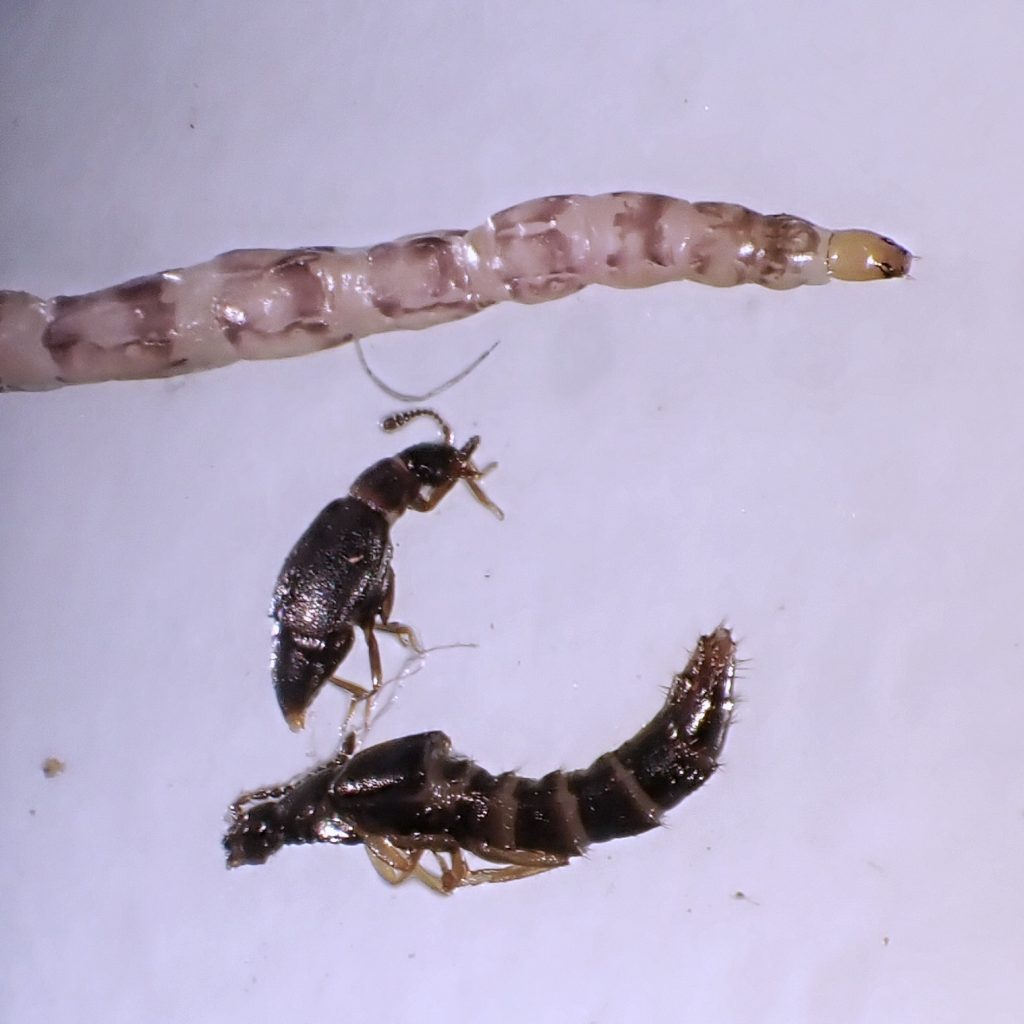
I also found two larvae on these fungus about which I hadn’t a clue as to their identity. My friend Craig Sondergaard suggested that they might be in Ceratopogonidae, a family of biting midges called noseeums and punks. This seemed odd, because most larvae in that family are aquatic. But the head capsule and body morphology fit my specimens, so I went exploring in that family, and it turns out that a few species of Culicoides have larvae that are known to live on fungus. I posted all 3 taxa on BugGuide, but I haven’t heard anything yet. If and when I do I will update this profile.
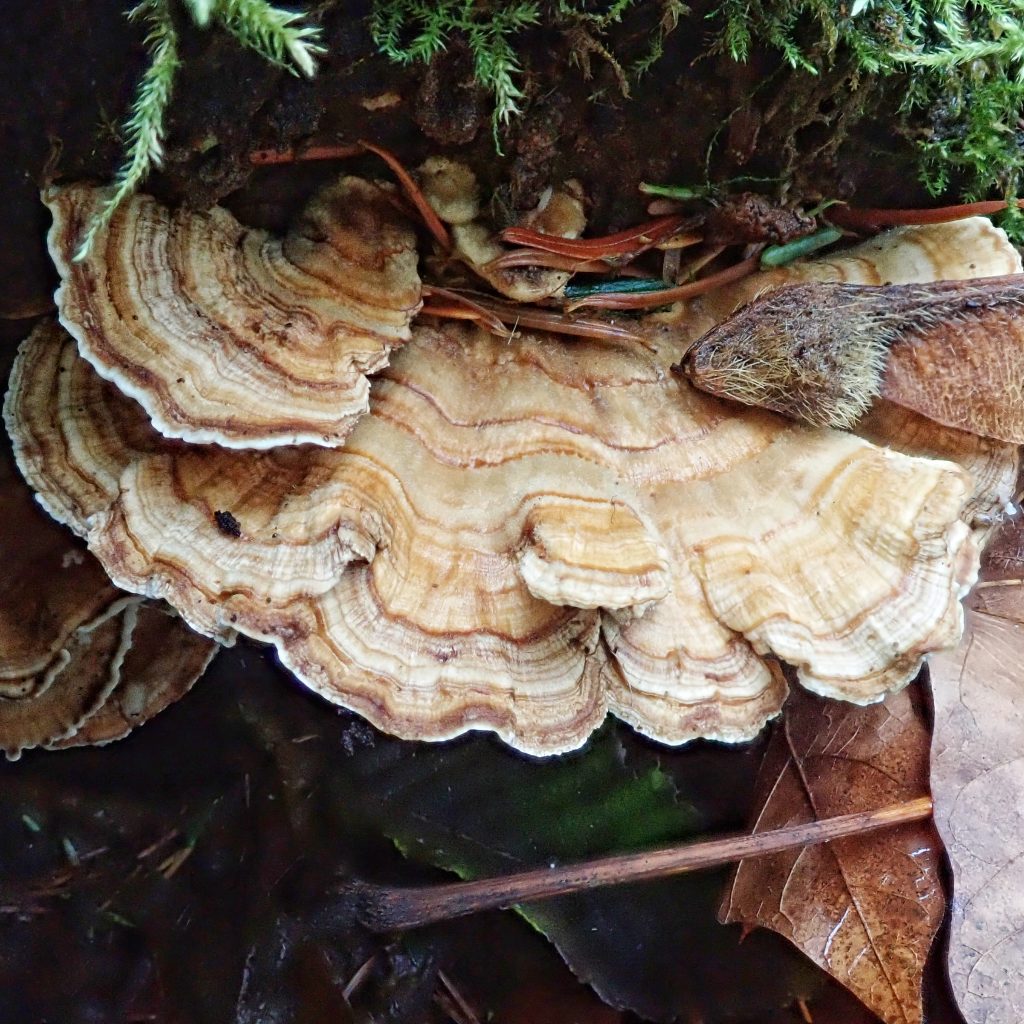
Turkey Tails are not considered to be an edible fungus, mostly because they are too corky and tough. But it has long been thought to have medicinal properties. However, as shown here (Money; 2016) their is little or no evidence that consuming the fungi itself, or drinking a tea made from its powder, has any particular efficacy. But there are defense chemicals and secondary metabolites in Trametes versicolor that, when extracted and concentrated, may well enhance immune system function and the efficacy of certain cancer treatments, as well as offering antioxidant benefits.
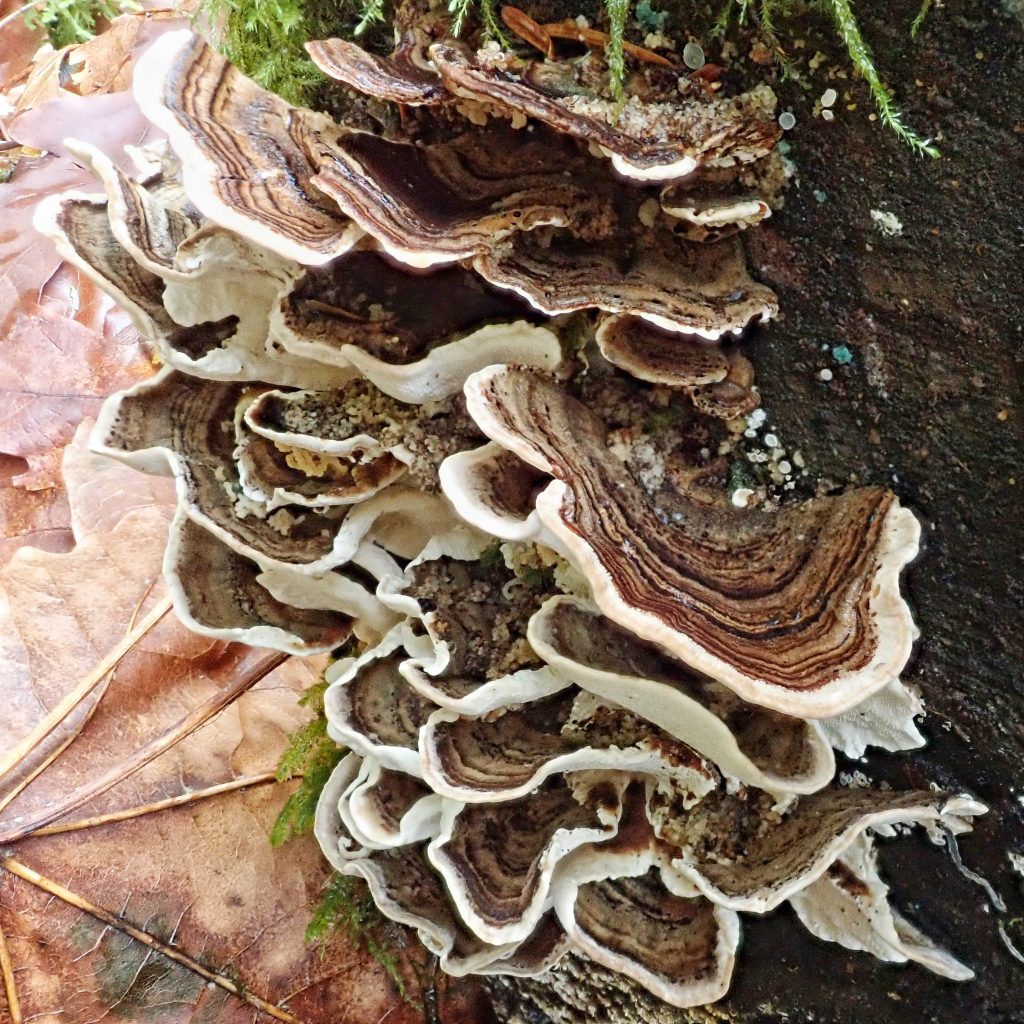
But really, does something have to ‘do something’ to benefit human beings for it to have worth? As a white rot fungus Trametes versicolor is important to the decomposition of woody debris. It offers food for some creatures, which in turn feed other creatures. And, from an aesthetic viewpoint, it is just beautiful and compelling to look at! In fact it has often been used for interior decorating purposes, especially during the season when its namesake fowl is being served at feasts. Although I can’t help but think that it is even more appealing growing on the side of a decomposing alder.
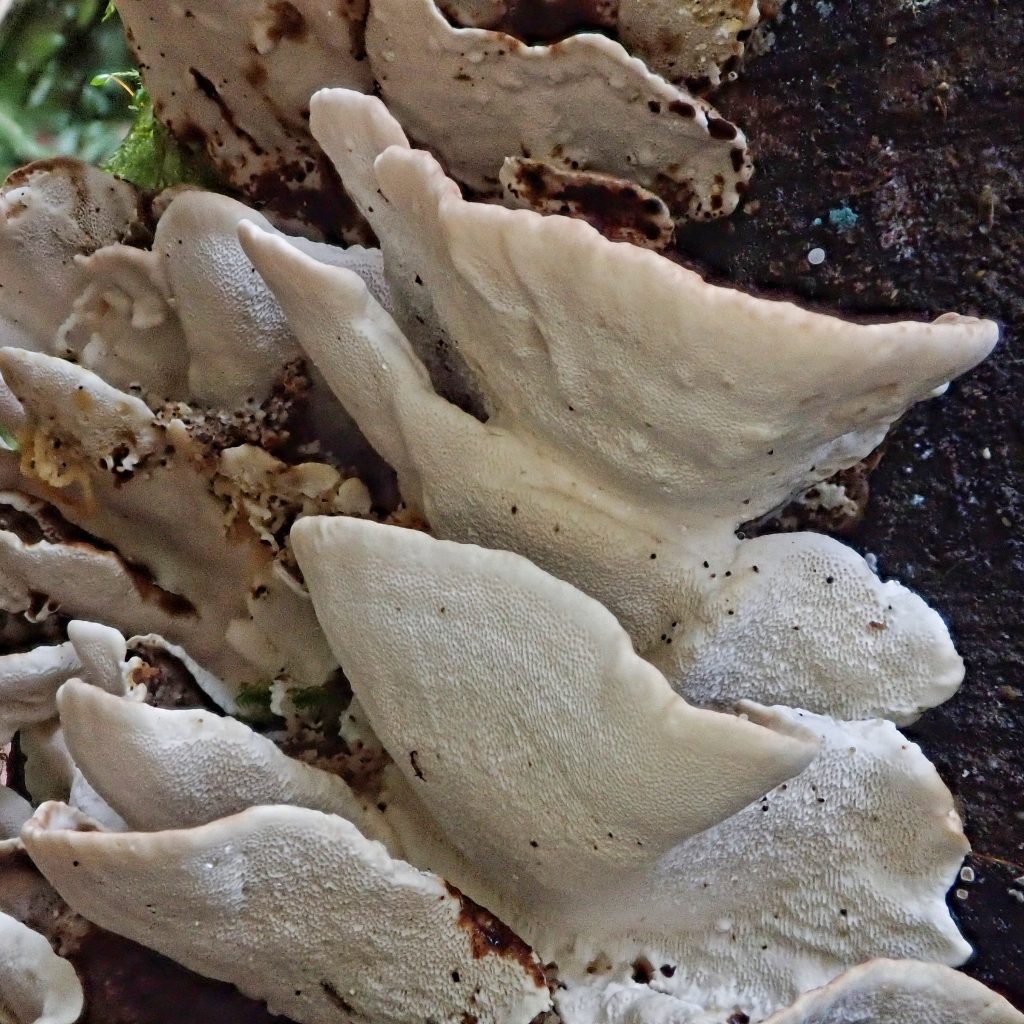
Description-Medium sized (up to 4” wide) polypore, usually in overlapping tiers, with concentric bands of alternating light and dark shades of yellows, greens, and browns (and even rarely red, blue, and black), and a whitish growth ring at the margin; dorsal surface velvety, at least on most bands; ventral surface white to cream; pores are very small, usually more than 3 per mm; fruiting body is fairly thin and flexible.
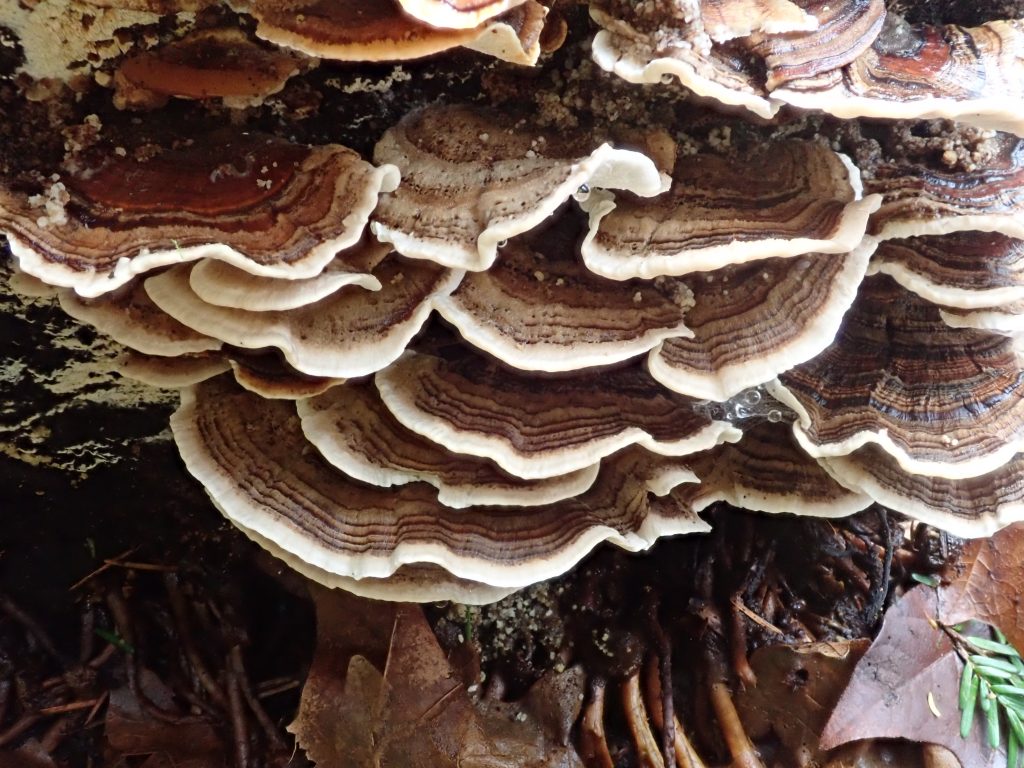
Similar species-Other Trametes with concentric bands of contrasting color have either larger pores (i.e., less than 3 per mm) or gills, or smooth dorsal surfaces, and/or are thicker and rigid; Trichaptum abietinum has jagged, mazelike, greyish purple pores; Bjerkandera sp. have greyish pores; Stereum hirsuta and S. ostrea lack pores.
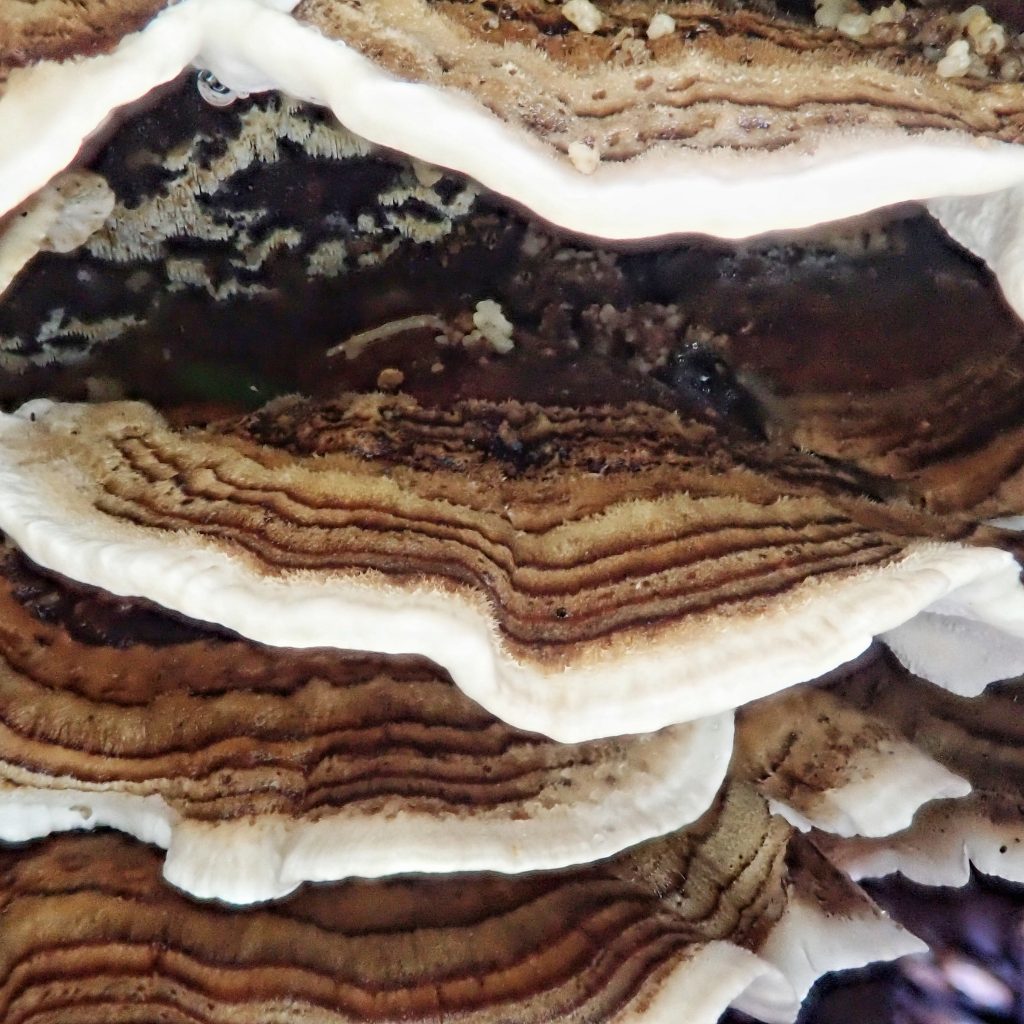
Habitat-usually dead or dying deciduous trees, but can be found on conifer logs and even rarely on living trees.
Range-Northern Hemisphere; region wide in appropriate habitat.
Reproductive timing-Spores released in winter, but the fruiting bodies persist year around.
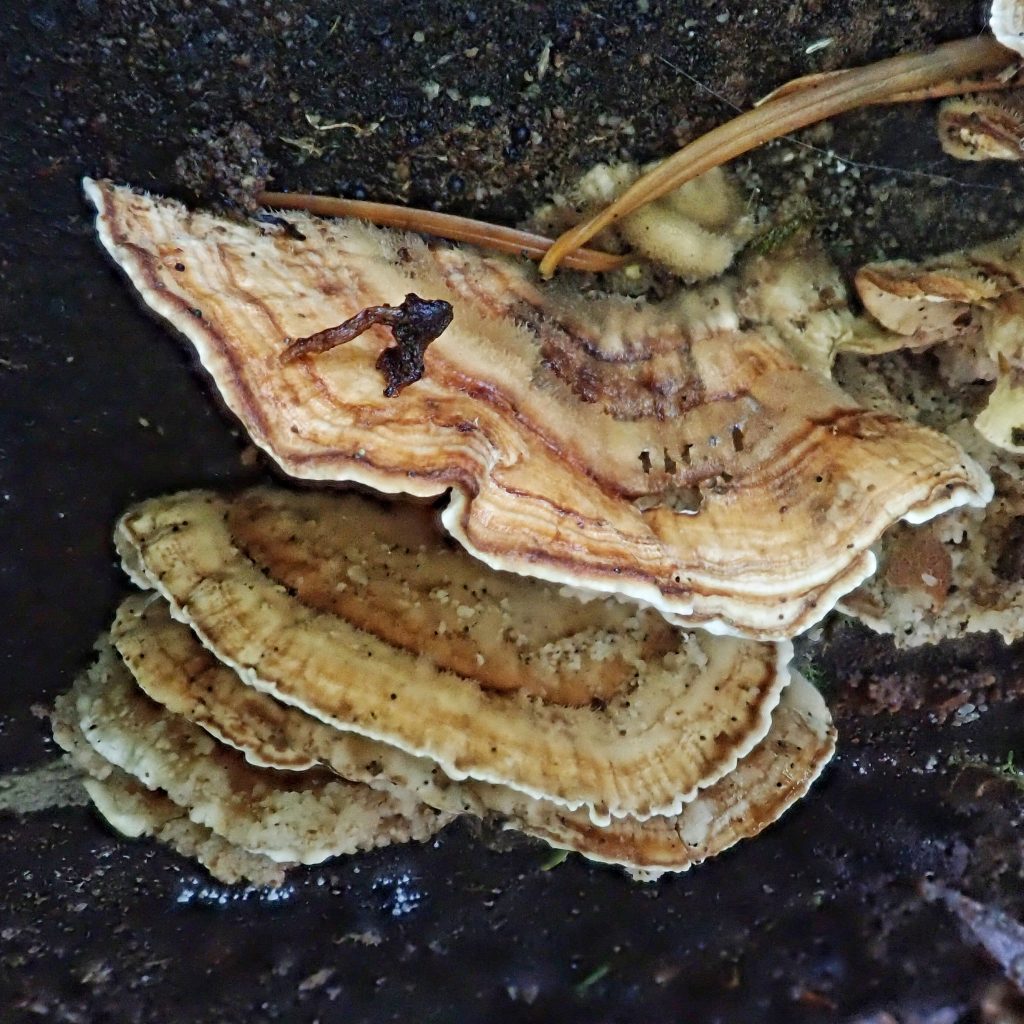
Eaten by– As mentioned above, some larvae of members of the family Ceratopogonidae in the the genus Culicoides, as well as larvae of flies in the families Platypezidae, Mycetophilidae, and Phoridae; springtails in the order Entomobryomorpha, as well as many other collembolans; probably also consumed by slugs, snails, and some beetles in the families Leiodidae, Staphylinidae, Endomychidae, Tenebrionidae, and Erotylidae amongst others; and small mammalian herbivores.
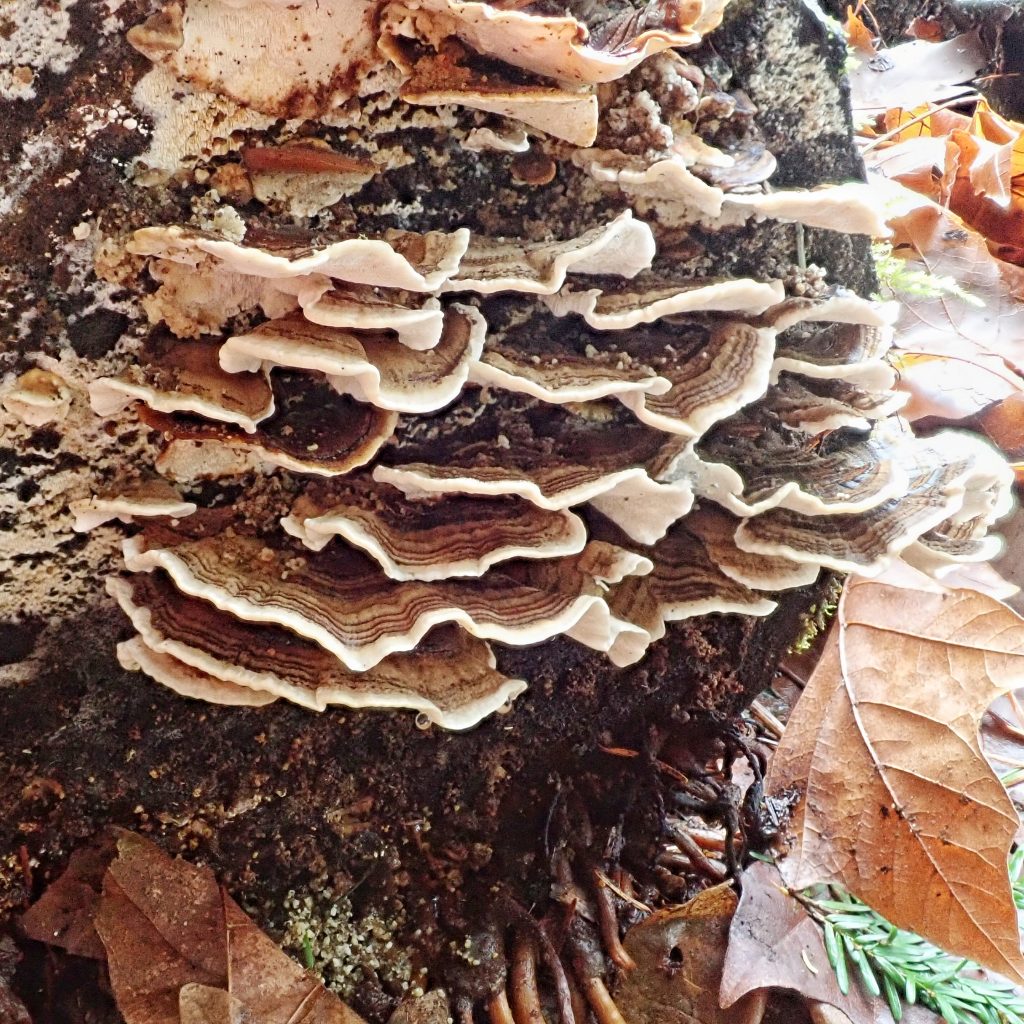
Etymology of names–Trametes is from the Latin words for ‘one who is thin’, and refers to the generally thin flesh of this genus. The specific epithet versicolor is from the Latin words for ‘change color’ (yes, the Latin word for ‘color’ is ‘color’), and refers to the high contrast between the concentric bands.
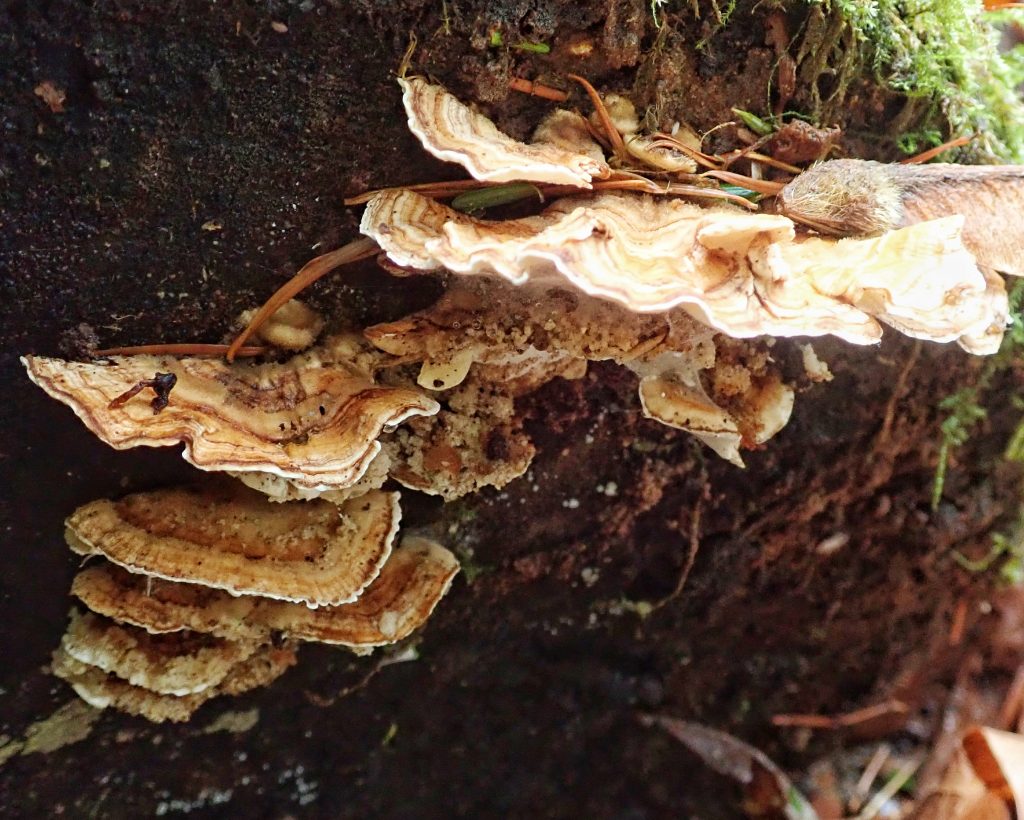
https://www.mushroomexpert.com/trametes_versicolor.html
https://www.first-nature.com/fungi/trametes-versicolor.php
https://www.messiah.edu/Oakes/fungi_on_wood/poroid%20fungi/species%20pages/Trametes%20versicolor.htm
https://www.healthline.com/nutrition/turkey-tail-mushroom
https://bmccomplementmedtherapies.biomedcentral.com/articles/10.1186/s12906-019-2681-7
http://biology.burke.washington.edu/herbarium/imagecollection/taxon.php?Taxon=Trametes%20versicolor
https://www.mykoweb.com/CAF/species/Trametes_versicolor.html
https://northernwoodlands.org/outside_story/article/turkey-tail-fungus
https://www.sciencedirect.com/science/article/pii/S1878614616000180
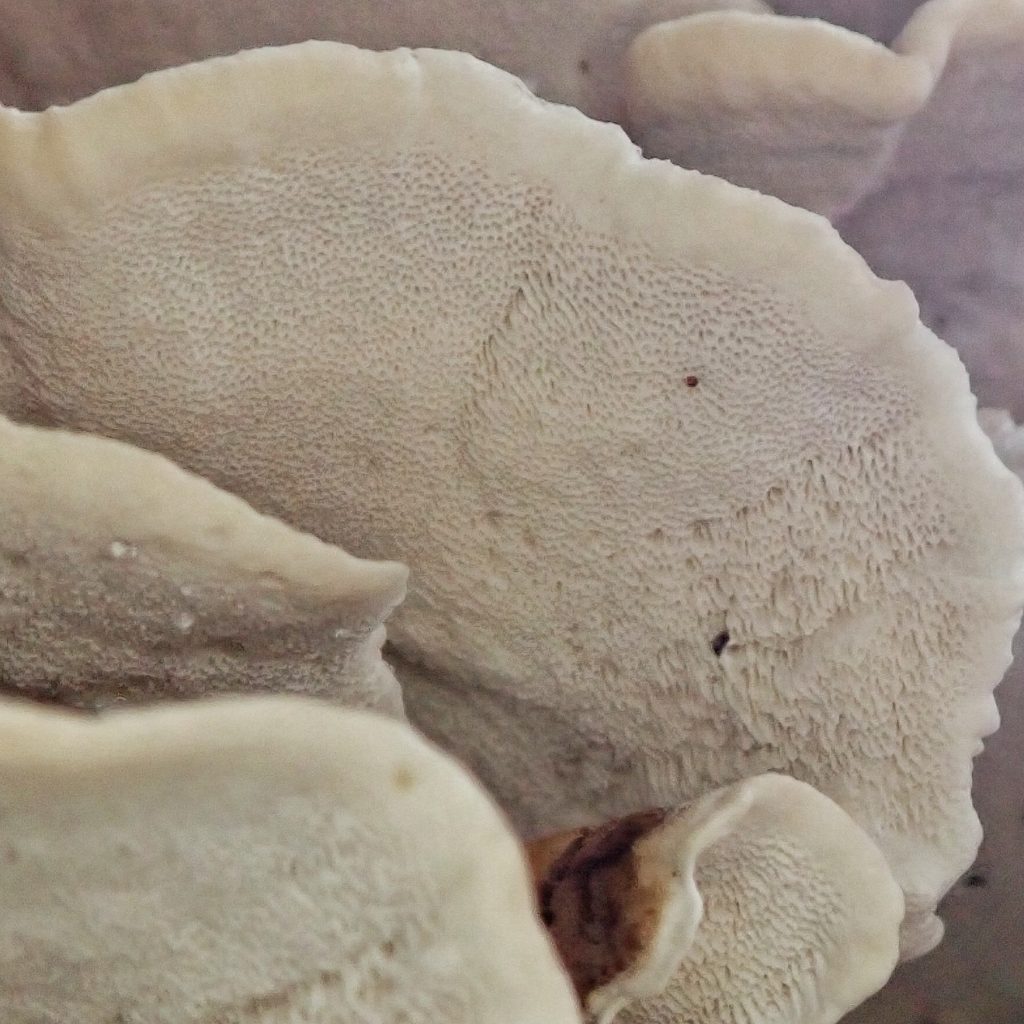
This particular specimen, along with others make very high quality and beautiful paper!
Interesting! I didn’t know that! Thanks for the information.